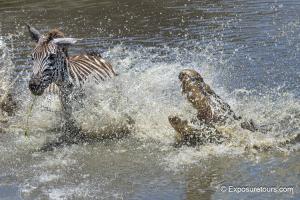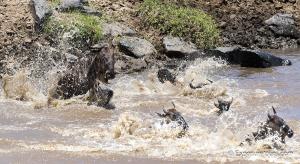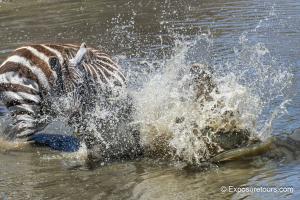Experience the Great Migration without the cost and crowds – a photographer reveals his secret
The great migration may be a bucket list item, but anticipate steep costs, long queues, and potentially underwhelming photos.
Bryan Pereira, a dual citizen of the UK and Canada, has been a qualified professional photographer since the age of 18, facing the challenge of creating unique visuals in today's world. His favorite location for the past 30 years has been The African Safari, where he conducts photo safaris with Exposure tours, strategically avoiding peak travel times and carefully selecting locations.
During the Great Migration, the ease of travel and the proliferation of digital and mobile photography result in the presence of numerous vehicles vying for iconic shots. Popular locations soon become crammed with 200 stationary vehicles, ten deep, focused on an area covering just 30 to 40 feet. The goal is to capture wildebeest or zebra frantically crossing the Mara River pursued by hungry crocodiles. Most travelers will return home after a 12-hour day, having only seen the back of a vehicle or a photographers' head. Those who get a clear shot end up with precisely the same image as fellow photographers shooting shoulder to shoulder. The annual migration increases the chances of being near events, but crowds diminish the viewing and photography opportunities.
Beyond the main action, there are numerous other animal interactions, such as big cat kills, but again, there will be a heavy audience present. The term 'The Ferrari Safari' has been coined due to the common occurrence of racing to these scenes. It's worth being aware that images shown on National Geographic and BBC are crafted over months or years, with special permission for close-up shots and montages of events. Nature rarely has the predictable and instant outcomes documentaries portray.
The other attraction of the Migration is witnessing the 1.5 million wildebeest moving between the plains of the Serengeti and Masai Mara park. However, Bryan likens it to watching cattle in the Midwest—exciting initially but soon becoming monotonous.
Instead of traveling in the summer months, Bryan recommends thinking outside the box, capturing animals leaving Kenya for the 500-mile journey back to Tanzania. From September to October, he enjoys unrushed and unobstructed access with numerous shooting opportunities. In this crocodile attack sequence, the zebra returned to the water five times before moving on. With no other vehicles present, Bryan was able to select any position on the riverbank while also perfecting his technique and framing. For a casual or beginner photographer, the action would likely be a trip highlight and could be well documented on even a third-generation mobile phone.
For curious photographers and the technically minded, the encounter was photographed with two full-frame Nikon DSLRs. Typically, wildlife and sports photographers use long lenses in the 400-800mm range; these action shots were taken with a short 200mm lens. Photography isn't about expensive gear; it's more about being in the right place at the right time.
Bryan opted not to zoom in tightly, instead shooting wider and cropping in post, avoiding the subjects going out of frame. The camera captured 6 images per second at 45 megs per RAW file. Knowing his camera buffer limit, he chose a low continuous shooting mode to avoid any missed frames. Settings ranged from 1/2500 to 1/3200 second, fast enough to freeze drops of water during the attack. At f/4, 200 ISO, the action was isolated, files were clean with no digital noise. Matrix metering was selected instead of center-weighted or spot metering. This allowed the camera to give a general measurement of the scene brightness without being overly influenced by highlights from the splashing water and dark tones of the crocodile.
The unpredictability of wildlife always presents fantastic photography opportunities, especially during the Greatest Show on Earth. For a unique experience, explore beyond the norm. Engage in thorough research, consider alternative times, and appreciate unique viewpoints.
Bryan Pereira
Exposure Tours
info@exposuretours.com
Visit us on social media:
Facebook
Instagram
Another once in a Lifetime Encounter
Legal Disclaimer:
EIN Presswire provides this news content "as is" without warranty of any kind. We do not accept any responsibility or liability for the accuracy, content, images, videos, licenses, completeness, legality, or reliability of the information contained in this article. If you have any complaints or copyright issues related to this article, kindly contact the author above.



